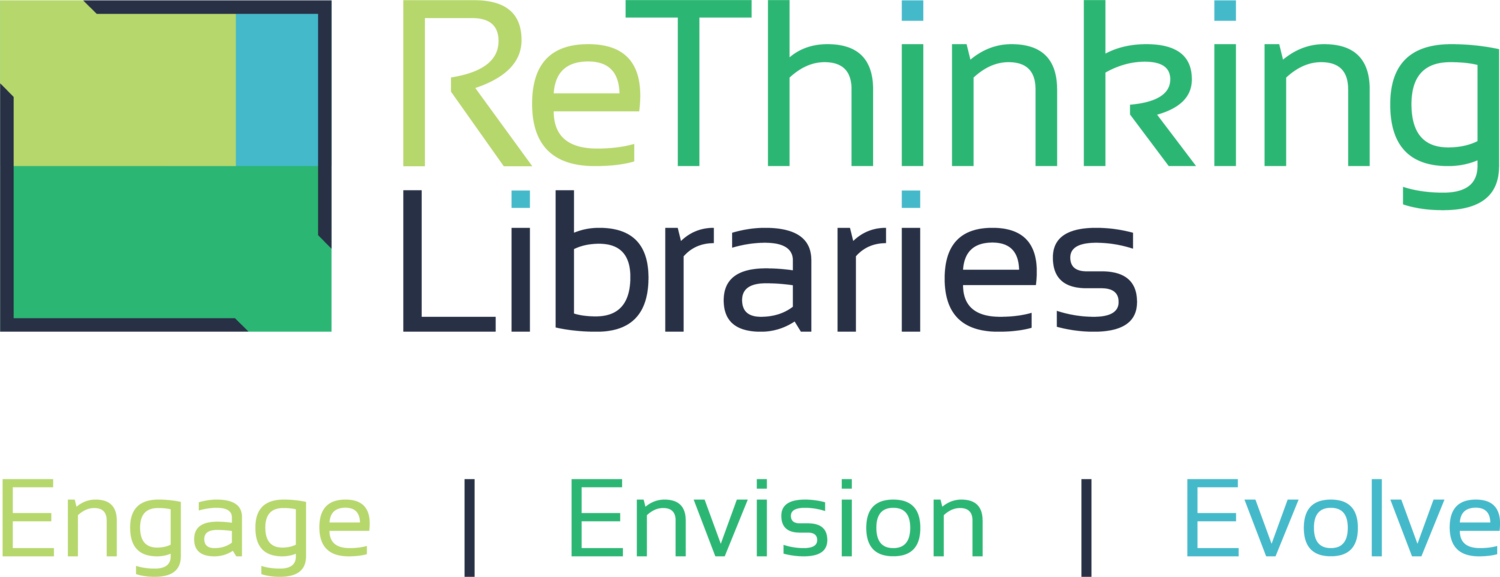Library Learnings
Over the past two years, libraries have navigated the challenges of a post-COVID landscape with remarkable resilience. The pandemic underscored the vital role libraries play in their communities while simultaneously revealing a rapidly evolving environment that demands new approaches. Through our work with libraries nationwide, ReThinking Libraries has identified several consistent trends and challenges that libraries are striving to address with dedication and innovation.
Library Usage
Cecil County Public Library, North East Branch (MD)
Covid Recovery Continues
Some libraries are back to pre-COVID levels and beyond while many are still not fully recovered to pre-COVID levels.
In many cases, physical and digital circulation has had a better recovery than door counts with some portions of the collection seeing even better circulation than pre-COVID levels.
CD, DVD, and Audiobook use has declined for most libraries as streaming services have become more popular and cars are no longer equipped with CD players.
Many patrons learned to better use the holds process and digital materials so many are not staying to browse or use other services when they pick up their materials.
Computer use is down in most libraries, but there is some question as to whether that will last as devices purchased during the pandemic age and fail.
Teen usage is not recovering evenly
Many libraries that aren’t located near their local high schools and middle schools are struggling to regain Teen users.
A focus on building relationships and engagement with older pre-teens through engaging programs and fostering those relationships into the teen years is a successful strategy for building these programs.
Staffing
Staff burnout and turnover continue to be issues
Increased competition around compensation levels continues to be a challenge.
There are many new staff members at all levels.
Training and development opportunities are critical to staff effectiveness and retention.
Many libraries are evaluating their Full Time to Part Time staffing ratios looking to increase the FT levels.
Spaces
Study Rooms are in high demand
With more virtual work occurring, people often need/want an alternative other than their home to work.
Co-working continues to be a need and companies like We Work are going out of business.
More people are looking for more private and separate workspaces in general.
Since libraries tend to be noisier than they used to be, a respite that allows for quiet and an opportunity to focus.
Increasingly the effective outdoor spaces trend continues to grow and see success
More users are looking to be “at the Library” but don’t want to be trapped inside.
Having good seating, good shade, and effective Wi-Fi access is critical to success, with power access being an additional preferred amenity.
Services
Libraries are filling voids left by cuts or discontinuation of services by other organizations in their communities
Libraries having Social Workers or some level of Community Navigators on staff continues to remain a growing trend.
Post-COVID learning loss is still real and noticeable
Need to be creative about finding ways to help students/parents offset those losses.
Enhancements and additional enrichment activities as part of Summer Reading is one way to help.
Summer Reading has also been key to getting people back to the library.
Culinary Literacy Centers are taking off as the newest form of maker/creation spaces
Food-related programs are in high demand and a great way to attract and connect your community to each other and the library.
These spaces/resources can come in many different forms and sizes with a Charlie Cart or Edible Education Station on the small end to commercial-grade teaching kitchens at the high end.
Increasing demographic diversity continues and is impacting more communities across the country
Diversity comes in various forms and extends far beyond race and culture.
Matching library services, programs, and spaces to community needs is critical.
Education and promotion are needed to share how the library offers beneficial services for all.






